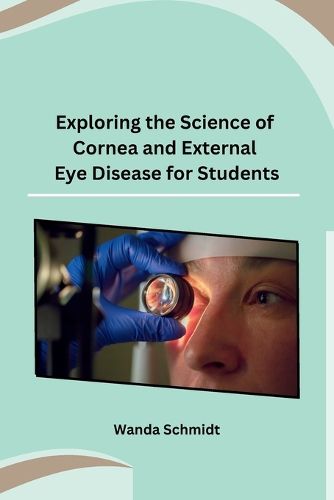Readings Newsletter
Become a Readings Member to make your shopping experience even easier.
Sign in or sign up for free!
You’re not far away from qualifying for FREE standard shipping within Australia
You’ve qualified for FREE standard shipping within Australia
The cart is loading…






This title is printed to order. This book may have been self-published. If so, we cannot guarantee the quality of the content. In the main most books will have gone through the editing process however some may not. We therefore suggest that you be aware of this before ordering this book. If in doubt check either the author or publisher’s details as we are unable to accept any returns unless they are faulty. Please contact us if you have any questions.
The cornea is a vital part of the eye that plays a crucial role in our vision. As students interested in the field of ophthalmology, it is essential to understand the significance of the cornea and its role in maintaining clear and healthy eyesight.
The cornea is the transparent, dome-shaped front surface of the eye, covering the iris, pupil, and anterior chamber. It acts as a protective barrier, shielding the eye from dust, debris, and harmful UV rays. Additionally, the cornea plays a significant role in focusing light onto the retina, allowing us to see objects clearly.
One of the primary functions of the cornea is to refract light. When light enters the eye, it is bent or refracted by the cornea. This refraction helps to focus the light rays precisely onto the retina, which is responsible for converting the light into electrical signals that are interpreted by the brain as images. Therefore, any irregularities or abnormalities in the shape or thickness of the cornea can lead to vision problems such as nearsightedness, farsightedness, astigmatism, or even blurred vision.
Maintaining the health of the cornea is of utmost importance. Various external factors can affect the cornea, including injuries, infections, and diseases. Students studying ophthalmology must understand the various corneal diseases and conditions that can impact vision. Some common corneal conditions include corneal ulcers, dry eye syndrome, keratitis, and corneal dystrophies. Recognizing the symptoms and understanding the treatment options for these conditions is vital in providing appropriate care to patients.
Furthermore, the cornea is a unique tissue that has the ability to regenerate. This property makes corneal transplants possible, where a damaged or diseased cornea can be replaced with a healthy donor cornea. Learning about corneal transplantation and the factors that affect its success is crucial for students interested in ophthalmology.
$9.00 standard shipping within Australia
FREE standard shipping within Australia for orders over $100.00
Express & International shipping calculated at checkout
This title is printed to order. This book may have been self-published. If so, we cannot guarantee the quality of the content. In the main most books will have gone through the editing process however some may not. We therefore suggest that you be aware of this before ordering this book. If in doubt check either the author or publisher’s details as we are unable to accept any returns unless they are faulty. Please contact us if you have any questions.
The cornea is a vital part of the eye that plays a crucial role in our vision. As students interested in the field of ophthalmology, it is essential to understand the significance of the cornea and its role in maintaining clear and healthy eyesight.
The cornea is the transparent, dome-shaped front surface of the eye, covering the iris, pupil, and anterior chamber. It acts as a protective barrier, shielding the eye from dust, debris, and harmful UV rays. Additionally, the cornea plays a significant role in focusing light onto the retina, allowing us to see objects clearly.
One of the primary functions of the cornea is to refract light. When light enters the eye, it is bent or refracted by the cornea. This refraction helps to focus the light rays precisely onto the retina, which is responsible for converting the light into electrical signals that are interpreted by the brain as images. Therefore, any irregularities or abnormalities in the shape or thickness of the cornea can lead to vision problems such as nearsightedness, farsightedness, astigmatism, or even blurred vision.
Maintaining the health of the cornea is of utmost importance. Various external factors can affect the cornea, including injuries, infections, and diseases. Students studying ophthalmology must understand the various corneal diseases and conditions that can impact vision. Some common corneal conditions include corneal ulcers, dry eye syndrome, keratitis, and corneal dystrophies. Recognizing the symptoms and understanding the treatment options for these conditions is vital in providing appropriate care to patients.
Furthermore, the cornea is a unique tissue that has the ability to regenerate. This property makes corneal transplants possible, where a damaged or diseased cornea can be replaced with a healthy donor cornea. Learning about corneal transplantation and the factors that affect its success is crucial for students interested in ophthalmology.